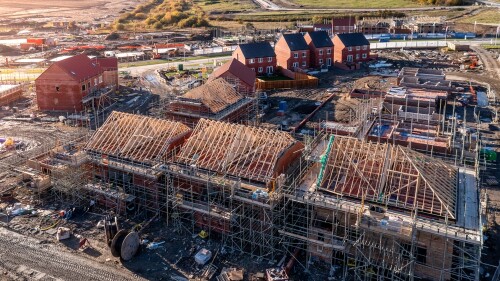London
Ten built environment projects from eight countries across the EMEA region have been announced as the finalists in the sixth annual ULI Europe Awards for Excellence, which recognize exemplary projects and programs in the private, public, and non-profit sectors. This year’s finalists comprise cutting edge refurbishment, restoration and new build projects, and include residential, healthcare, mixed use, education, community, laboratory, and office projects from Italy, Germany, the UK, Belgium, Sweden, Denmark, France, and Spain.
Following a masterplan adopted by British Land, the AustralianSuper pension fund, and the Southwark Council, developers are now seven years into a 15-year project to transform a 53-acre (21.44 hectares) parcel of industrial land and a former quay into a community that will include as many as 3,000 new homes, office, retail, leisure, and entertainment space.
In the heart of London’s Covent Garden neighborhood, a complex of five Victorian-era structures—previously home to a seed merchant company, a brass and iron foundry, and a Nonconformist chapel, among other uses—have been restored and adapted into a single, cohesive office building with ground-floor retail and dining space. The three-year restoration preserved the property’s industrial heritage, yet it provides enough flexibility to meet the needs of today’s workforce.
The awards celebrate a senior leader, a young professional and a DEI champion
ULI has launched C Change for Housing, a major new pan-European program designed to mobilize the real estate industry around two of society’s most urgent and interconnected challenges: the climate crisis and housing affordability.
A new ULI report, supported by C Change and Net Zero Imperative, outlines the key barriers to decarbonization, and presents seven guiding principles that address asset stranding risk.
TeamLHBK from the University of Cambridge in the UK has been named the winner of the sixth annual ULI Hines Student Competition—Europe.
Although ready to commence a new real estate cycle, real estate leaders globally are braced for another challenging year of uncertainty, with lingering inflation, largely driven by factors including geopolitical instability, and persistently higher interest rates in some regions, potentially delaying a hoped-for recovery in capital markets and occupancy metrics. This is according to the Emerging Trends in Real Estate® Global Outlook 2025 from PwC and ULI, which provides an important gauge of global sentiment for investment and development prospects, amalgamating and updating three regional reports which canvassed thousands of real estate leaders across Europe, the United States and Asia Pacific.
As buildings become more efficient and run on “cleaner” energy sources, the industry’s attention will need to include embodied carbon—emissions associated with the manufacturing and transportation of building materials, as well as the construction, maintenance and disposal of buildings.
ULI Europe has announced the establishment of three new Product Councils, focusing on Operational Real Estate, Placemaking and the global real estate markets through the European Global Exchange Council (GEC).









